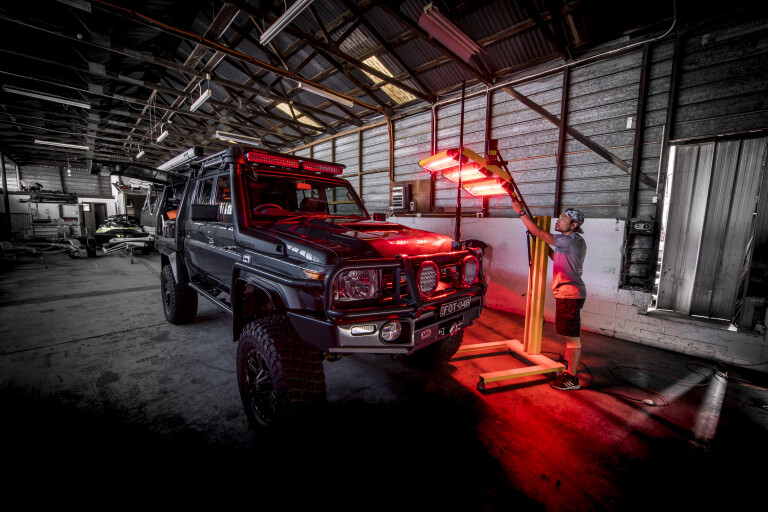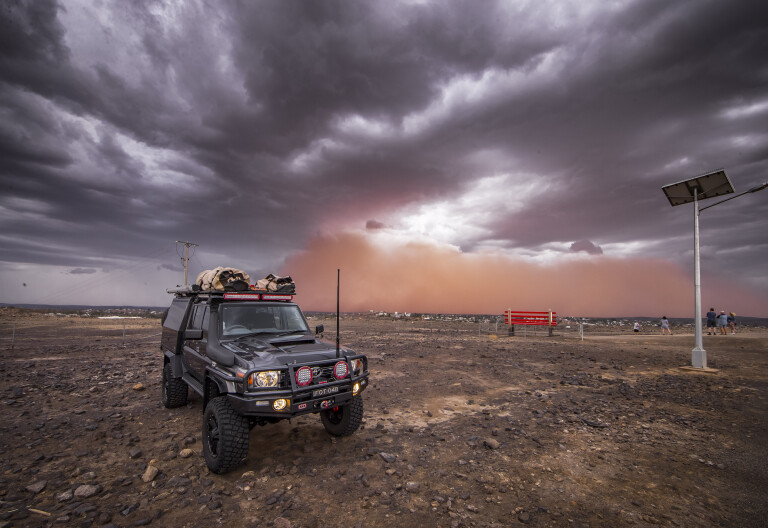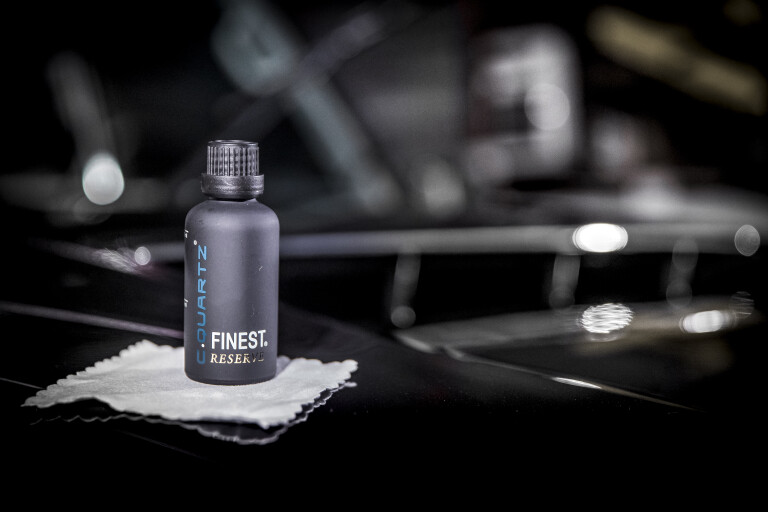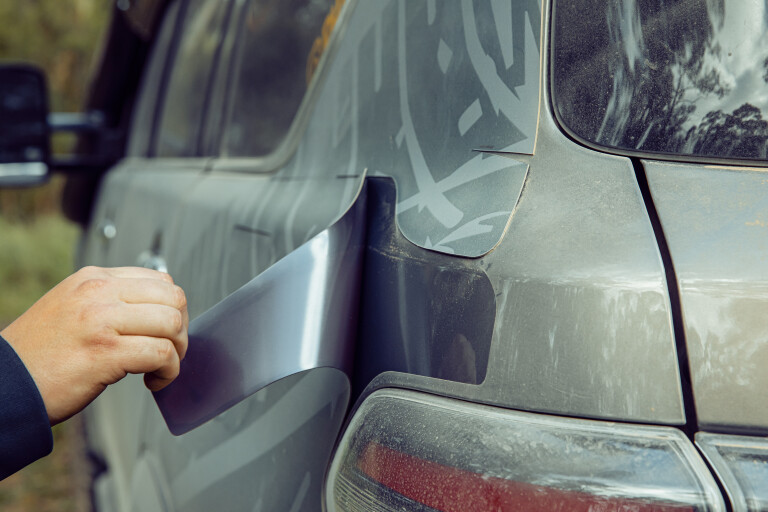
As the song goes, “you don’t know what you got ’til it’s gone” – the paint on your 4x4 is a bit like that, you don’t really give it much thought until you rip a big old line down to the primer along the side of your door while driving off-road. Great, there goes a grand or two in touch-up work.
That’s the thing about paintwork: it’s pretty important. Yeah yeah, it’s not exactly as visually exciting as getting a bullbar or a fresh set of tyres bolted up to your fourby, but think about this for a sec. These days more than ever, your vehicle is an investment – you sink a bunch of time and money in to it, the last thing you want is for it to end up with more scratches in it than a dodgy horse race, especially when it comes time to resell.
Luckily, we’re living in the future and there are a multitude of options for keeping your panels pristine. Everything from spray-on liners to adhesive options to combinations of several different methods for a paint job that’d keep even the most OCD of us from developing facial tics.
Gone are the days of covering your ute in tray-liner or, worse, painting it matte black (come on, you’re better than that), pinstripe prevention is easier, and arguably more important than ever without affecting the looks of your vehicle – in some cases actually making it look a whole lot better.
Ready to forget that feeling of dread when you see an overgrown track and regain your enjoyment of driving the tight line without the worry of knocking ten-grand off the value of your rig? Let’s take a look at the choices.

TRAY LINER
Probably the cheapest and most DIY-friendly of our list, tray-liner sprays give you a thick, flexible coating over your paintwork. As the name implies, they’re used commonly for the inside surfaces of ute trays to prevent dings and scratches when you chuck a ton or two of concreting gear in the tub.
Quality varies a lot and there seems to be new products popping up in this category every few days, but half-an-hour spent Googling will point you in the right direction. Aside from the looks (which we’ll get to in a sec), tray liners are fantastic. They add a truly excellent amount of durability to a panel and it really does take a lot of weight of hard granite to damage. But (come on, there’s always a ‘but’) they look – how do we say this – like crap. Sorry, we get that looks are subjective and you may love the look of your old beater covered in a hammerstone finish, but a full-vehicle respray with tray liner makes the panels look like Freddy Kruger’s face, and can be a pain to clean too.
With that said, when applied tastefully it can look pretty good. We’ve seen it applied to the lower half of panels (where rock-rash is most prevalent) and it suits the vehicle perfectly; but again, we’re not telling you how to modify your car here, we’re just dropping a little knowledge – what you do with it is up to you, but think long and hard before slathering your rig in liner.

VINYL WRAP
Arguably the most popular option on our list, vinyl wrapping a vehicle is a fantastic way to offer a high level of protection while looking like, well, whatever you want it to. With the advent of digital printing any design, motif, flavour or permutation of an image are available – it’s a great way to give your 4x4 a unique look or advertise your business while gaining a healthy amount of protection from scratches and chips.
For those unaware of vinyl wraps, think of them like a giant, hard-wearing sticker for your panels, they’re basically like wearing gloves while working with rough-hewn timber – don’t like splinters in your hands? Wear gloves. Don’t like scratches on your fourby? Wear a vinyl wrap, you get the idea.
It’s worth noting that quality is all over the place with vinyl wrapping. Don’t fall for the ‘cheaper is better’ trap thinking that saving a few bucks will see you dollars ahead. Any initial saving will likely be absorbed by the fact that sub-par vinyl will fade in the sun, lose their adhesiveness and have you reapplying them in less time than it takes for you to read this mag. Stick to (see what we did there?) good quality wraps and save yourself a giant headache and get the job done by a professional, unless you happen to enjoy 4x4-sized origami ... we ain’t judging you.

PAINT PROTECTION FILM
PPF is an ultra-thin layer of polyurethane that effectively forms a barrier between your paint and the outside world. It is extremely effective, long-lasting and is one of the best forms of defence against overgrown lantana tracks. The polymer can self-heal after minor scratches and prevents damage from UV rays and hard water. It is applied in a similar fashion to a vinyl wrap, which essentially makes it a professional-install-only job, but the results are outstanding.
All that comes at a cost though: not only is it pricey, quality across brands can also vary wildly (3M originated the product and is still widely considered to be the best) and is not always as hydrophobic as it could be. It also requires upkeep to prevent your paint from being damaged, and if the PPF itself does cop a nasty gouge from that boulder you leant up against, you can’t just give it a quick touch-up while the footy is on, the whole film will have to be replaced.
If you want the absolute best in paint protection you can also pair PPF with …
CERAMIC COATING

Another polymer, ceramic coating is as the name suggests: a colour-matched ‘paint’ for your 4x4 that essentially means you’ll never have to wax your pride and joy ever again. Not only is the applied layer durable against scratches and chips, it is also very hydrophobic and keeps your paint looking like it came fresh out of the spray gun a couple of days ago. Our very own image connoisseur, Michael Ellem, uses it on his beast of a 79 Series and tells us it’s one of the best things he’s done to his vehicle, and he’s done a lot.
It’s worth noting that ceramic coatings are not 100 per cent scratch-proof, nor will they make you vehicle bullet-proof. However, they do add, especially when combined with a good layer of PPF, a solid base of protection which will give you the best chance at keeping the panels in mint condition and your vehicle looking schmick for staring at it lovingly in the driveway or when the time to move it on comes.

MAGNETIC PANELS
A great option for vehicles on day trips that aren’t overly worried about exceeding GVM. The CNC cutting of these stick-on-pull-off panels means there is barely any discernible gap between the stock sheet metal and the magnetised panel, and they can even be colour-matched to your vehicle so it would take an eagle eye using a magnifying glass to even notice they’re on there.
As far as price goes, a full vehicle-specific body kit generally comes in under the $1000 mark, so the value is hard to contend with, plus the feeling of rubbing up against that ironbark while knowing your paint remains in showroom condition under the panel, is priceless.

However, the elephant in the room with this option is the weight and convenience of use. Many of us who go camping or touring for extended periods are already giving the weight limits of our vehicles a generous nudge, and adding these extra kilos may tip us over in to illegal territory. Then there’s the fact that they’re not really suited for highway use – triple-digit speeds being more than enough to overcome the magnetic bond of the panels. Oh, and alloy-bodied cars ain’t magnetic – just as you Land Rover and Amarok owners know.



COMMENTS